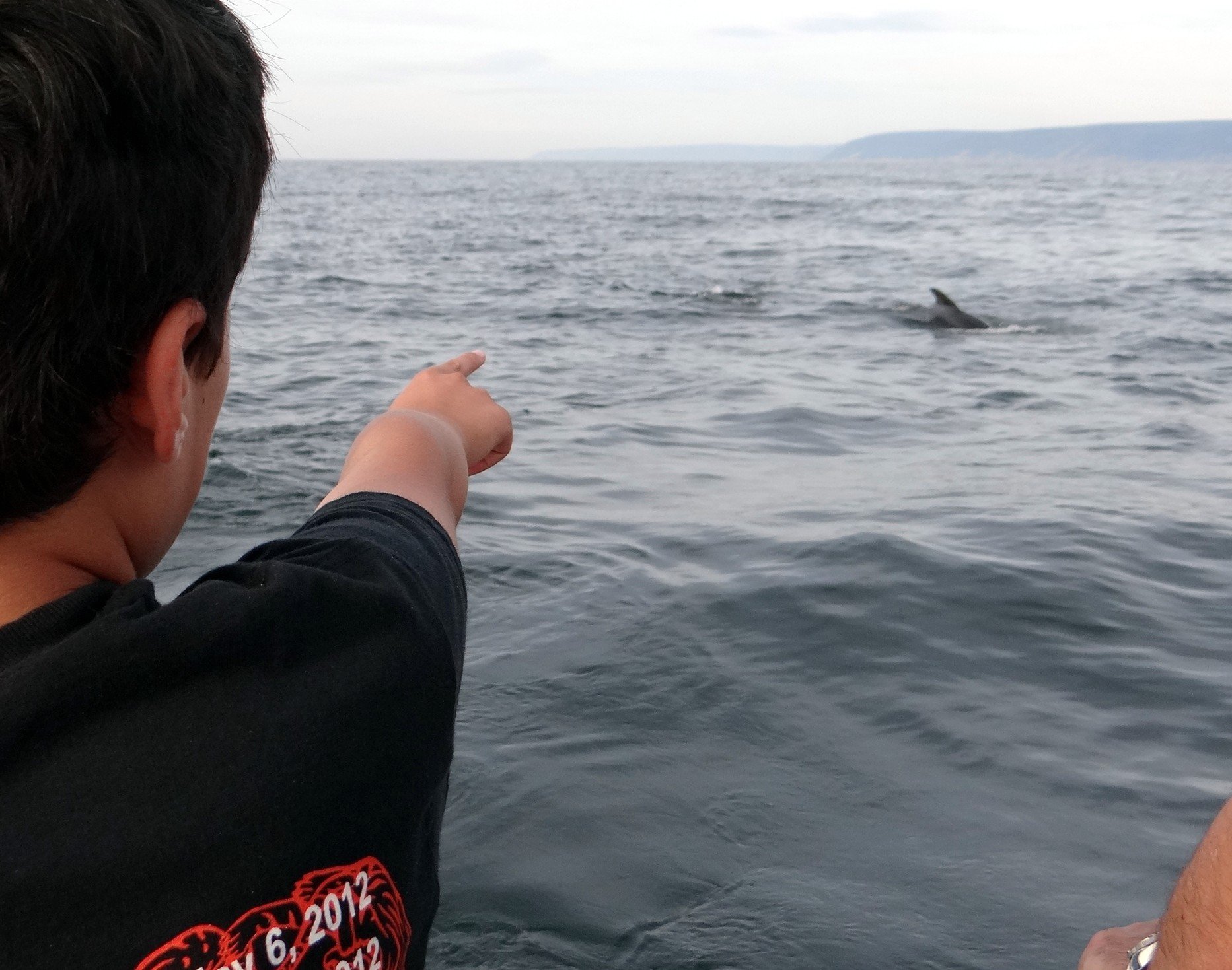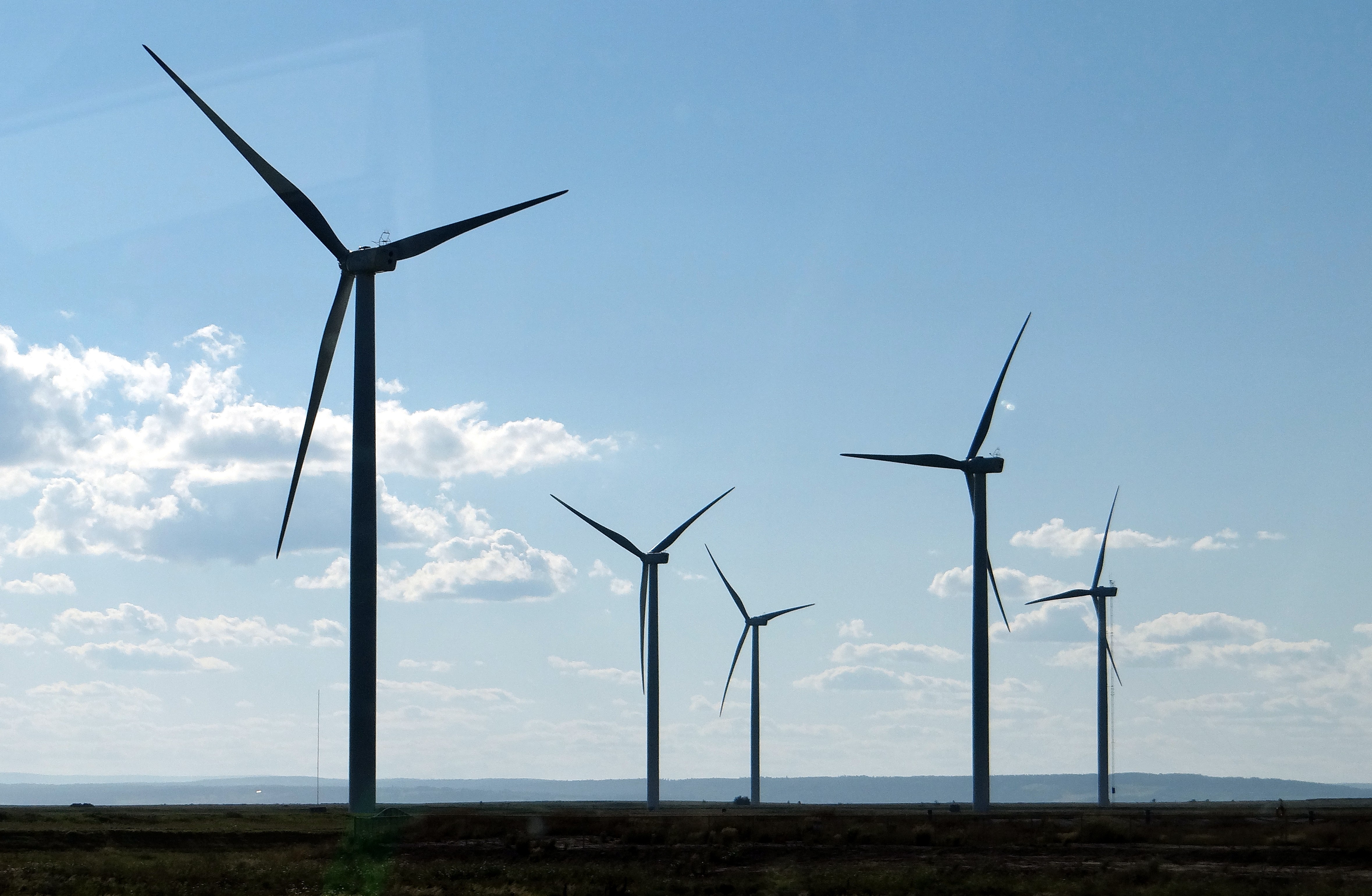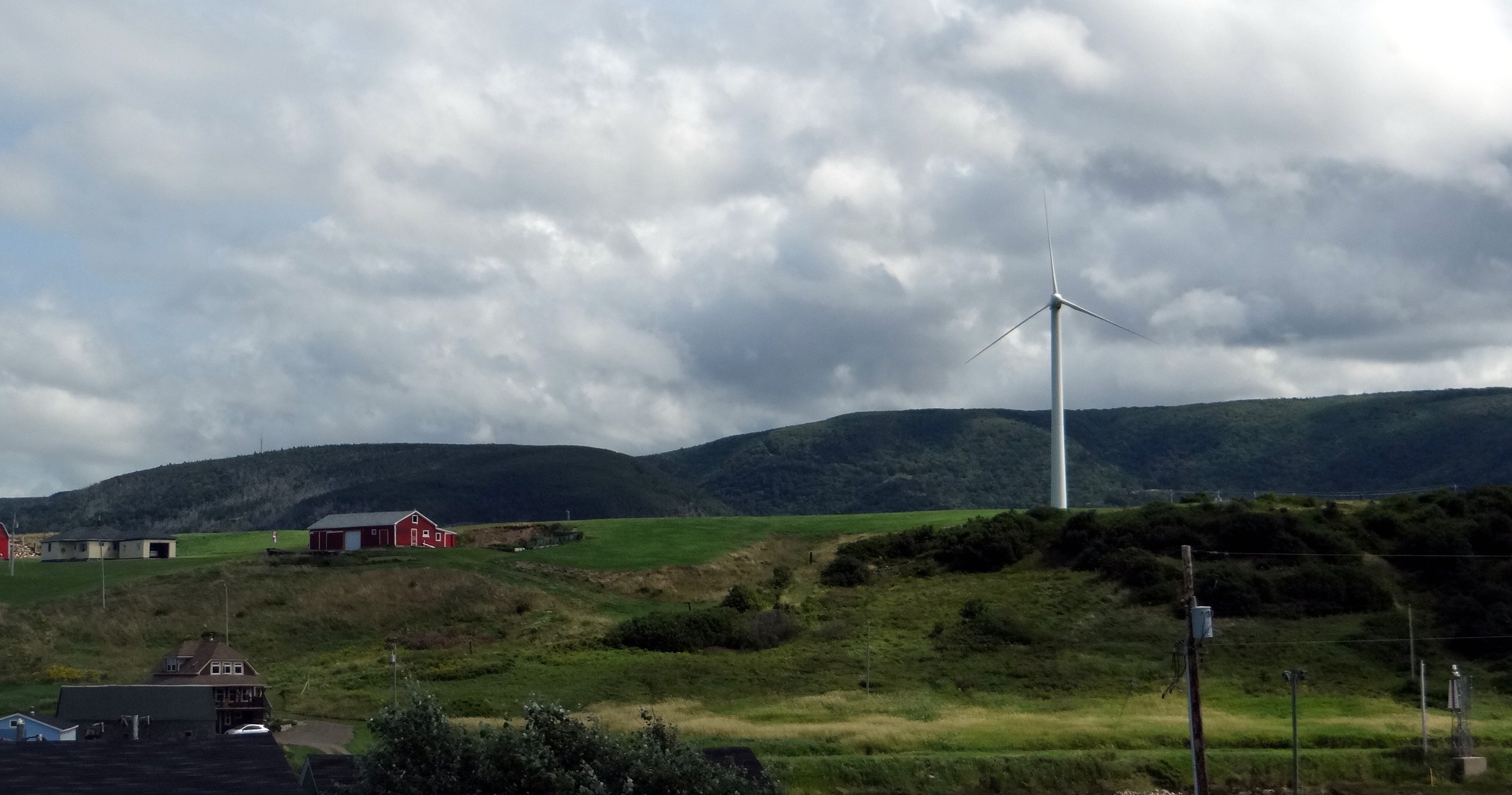My family and I were fortunate to get to vacation last month with cousins, siblings, and grandparents on a long road trip around an area northeast of home. Great family time, loads of car games and card games, historical and natural attractions, and lots of driving practice.
The trip also included chances to see whales doing their thing, and wind farms doing theirs. To this ocean-loving and energy-oriented tourist, both aspects of the trip — the whales and the turbines — were marvels to behold. They have important differences, but more similarities than you might think.
Whales and Wind: Similarities and Differences
Some ways whales and wind turbines are similar, and ways they’re different:
Similar: Both connect you to nature. Wind turbines harness the natural power of the wind to make virtually carbon-free electricity. Whales harvest fish and krill to, well, make more whales. Naturally.

Whalewatcher and a whisper of a whale (Credit: J. Rogers)
Different: Wind turbines are easier to spot. We did well on our whalewatching day, with dozens of pilot whales making themselves available for photos against a picturesque sunset backdrop (though almost all my photos turned out to be of waves against a picturesque sunset backdrop, sans whales).
Wind turbines are definitely more cooperative in that regard, though lighting conditions mean that they’re not always as easy to see as opponents sometimes suggest. (That, and the fact that my wife wouldn’t let me stop the car at every turbine to take a picture, cramped my photographic style.)
Similar: Both are beautiful. Okay, I’ll grant that this one has a degree of (100%) subjectivity. As we say in our handy overview publication Tapping into Wind:
When it comes to aesthetics, wind turbines can elicit strong reactions. To some people, they are graceful sculptures; to others, they are eyesores that compromise the natural landscape.
Opinions are probably mixed about the attractiveness of whales, too. As you might imagine, I’m in the “graceful sculptures” and “awesome marine mammals” camp.

Credit: J. Rogers
Different: Wind turbines generate electricity with no waste. Unlike most other major sources of electricity, wind turbines make electricity with no air emissions, no global-warming pollution, no soil or water contamination. As for whales and waste, I really can’t say, as they don’t tend to cover that aspect in whalewatching brochures.
Similar: Both can attract tourists. See next section.
Different: Wind turbines don’t encourage seasickness. We had a calm day for our recent whalewatching tour, but what waves there were didn’t sit well with some passengers, including my younger son. He was fine with all the wind turbines we saw, though. (There’s a more scientific discussion of wind-related health issues here.)
Wind, Tourism, and Asparagus
Whale-watching is a booming business, as is wind development in general.
Studies of wind’s tourism value show varying results, though there are lots of positives. Some people purport to be attracted by them; others turned off. The wanna-see-‘ems have generated economic opportunities that entrepreneurial government bodies, companies, and non-profits are taking advantage of. Those include:
-

Atlantic City wind farm (Credit: Flickr/R’lyeh Imaging)
Atlantic City, NJ, where tours of the turbines at the city’s wastewater treatment facility attracted some 15,000 visitors a year, even before they switched to a no-appointment-necessary format. “They’re like a tourist attraction,” says a local guest relations person. “A lot of guests request rooms with a view of them.”
- North Palm Springs, CA, where a company offers $10-$35 tours through one of the country’s oldest wind farms, “provid[ing] comprehensive information on the workings of wind-farming, and tak[ing] visitors through the entire history of the industry.”
- Cape Cod, where HyLine Cruises is gearing up to offer tours of what’s likely to be the country’s first offshore wind farm, saying that “The creation of this world class tourist attraction will provide yet another great reason for people all over Massachusetts, New England, the United States and the World to visit Cape Cod and the Islands.”
Other countries have looked at the wind-tourism nexus to a greater extent (lit review for Europe), including Germany, as discussed earlier this year in Renewables International. One study found that “32 percent of tourists and locals do not mind wind turbines at all, while only 9.2 percent do,” and another that “59% of those surveyed… said they did not mind the turbines, while 28% said they were ‘acceptable’; in contrast, only 12% said they did not like the turbines.”
[A helpful related video includes a German-English translation guide for wind issues, including for the word “asparagus”.]
So: Whalewatching or Windwatching?
Whalewatching isn’t for everyone. Neither is windwatching. But as for me, for a solid, enjoyable family vacation, I’ll look for both.

Credit: J. Rogers
P.S. An issue not unrelated to the wind-tourism connection is how wind turbines and wind farms affect property values, for those fortunate, or unfortunate, enough — again, opinions vary — to live near them. Watch for a separate post on that issue soon.
